

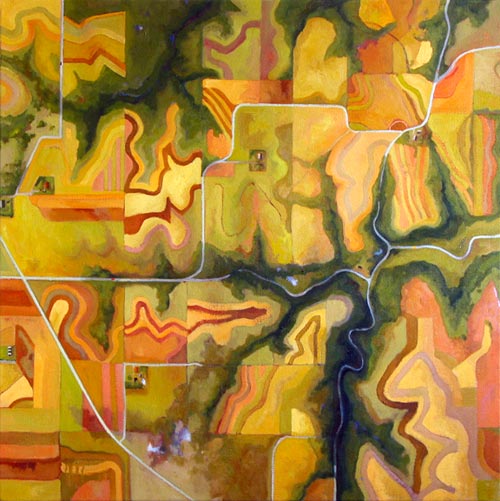 Wind drift 8
Wind drift 8
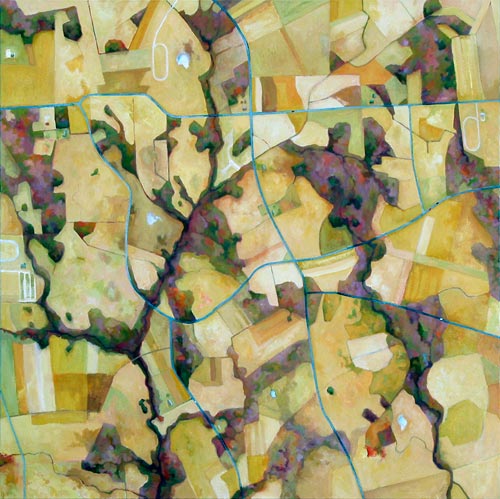 South by Southwest
South by Southwest
Gallery Notes
Writers of history naturally divide things – concepts, people, events, epochs, etc. – into categories and classifications, and writers of art history are certainly no exception. Perhaps the most pervasive categories into which we divide art are those of representation (not to be confused with ‘realism,' as it so often is) and abstraction. With the possible exception of some forms of performance art, virtually every artwork can, in whole or in part, be classified according to these two concepts. And the concepts are used so commonly that we unfortunately take their definitions for granted.
The work of upstate New York artist, Barbara Page doesn't allow us such license in our use of these concepts, however, because her work is inevitably both representational and abstract. More precisely, it is about the progress from representation to abstraction. Barbara works in series, choosing a familiar object or image in order to explore through serial representations the underlying patterns, color associations and abstract forms which define the potential for aesthetic involvement in even the most commonplace things.
The artist achieved national prominence with a project on which she worked for the better part of the 1990's. Rock of Ages, Sands of Time is a series of 544 square panels, with each panel representing roughly one million years in the history of the earth. With uncanny consistency, each panel reads as both a representation of a fossilized remains and as a painterly abstraction. Of the project, Barbara states, I sketched fossils in museums and paleontology collections from California to Cape Town. Back in the studio recomposed the pencil drawings with a tempered dose of imagination, and transformed them into dabs of paint. My interpretation of the data is subjective rather than analytical. Our fascination with each of the images resides precisely in its assuming a dual role as object of scientific interest and object of beauty. The series today forms the literal centerpiece of the new Museum of the Earth, which opened in 2003 near Ithaca, New York.
In a more recent series, Barbara began by copying electrical diagrams of her late father but, where possible, extending the lines into Mondrian-like, rhythmic patterns. We initially recognize the pieces as electrical diagrams but, upon closer inspection, we become fascinated with the line itself and its role in defining form. Similarly, her current series of paintings finds its inception in aerial photographs. (Among her many other activities, Barbara is a pilot.) They at first read as topographical images but, as we continue to view them, they increasingly dissolve into abstract shapes and juxtapositions of color masses. As in all of Barbara's work, our expectation of the literal transforms into an awareness of an object as art. Our aesthetic pleasure is in witnessing the very transformation from representation to abstraction.
Biographical Sketch
Learning to fly was the catalyst for Barbara Page's career as an artist. It gave her a point of view. After earning her pilot's license, she took up painting and received her MFA from Cornell University in 1975. Her watercolors, oils, and mixed media works have been exhibited in museums and galleries in New York, Philadelphia, Boston, and California and are included in numerous corporate collections. Paintings from the recent "micromaps" series were exhibited at the AIR Gallery 9th Biennial, Brooklyn, NY in March 2011. Her Book Marks project will be on display at The Center for Book Arts in NYC from April 15-June 25, 2011. Page has a strong interest in natural history. In 2003 "Rock of Ages, Sands of Time," her series of bas-relief paintings depicting the evolution of life was permanently installed in the Museum of the Earth in Ithaca, NY. It is a visible metaphor for an immense stretch of time. An eon. Nearly five hundred and fifty million years—the estimated interval between the origin of macroscopic life on this planet and the present. Each of the 544 contiguous panels represents the passage of a million years. Fossil flora and fauna are depicted in chronological order and at true scale. They are embedded in a muted rainbow of colors evoking the geological matrix in which they were found. The book, Rock of Ages, Sands of Time, by Barbara Page and Warren Allmon, was published by The University of Chicago Press and contains color plates of the entire project.
In 2010 the North Carolina Museum of Natural Sciences in Raleigh commissioned Page to create a history of life on porcelain tiles for the railings of a pedestrian bridge 140 feet long, connecting the present building with a new wing. She also designed the floor of the bridge. Just recently Page received a second commission from this museum to make bas-relief paintings for galleries at each end of the bridge. The bridge between the museum and the new Nature Research Center addition will be completed early in 2012.
Page is represented by The Oxford Gallery in Rochester, NY. Her work is included in the Viewing Program of the Drawing Center in New York City and she is an artist member of The Center for Book Arts. Page is a fellow of the Virginia Center for the Creative Arts. She participated in the 2008 NYFA MARK professional practices program. Her studio is in Trumansburg, NY.
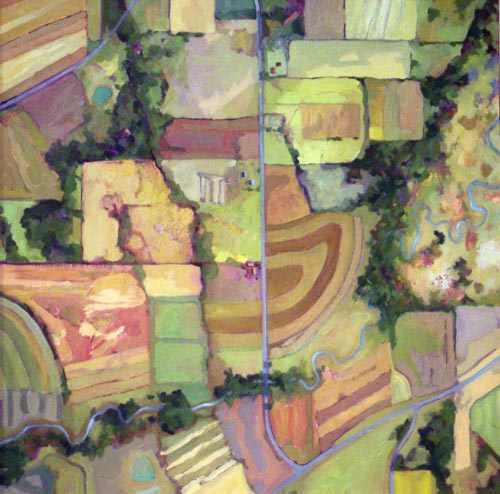 Downdraft #2
Downdraft #2
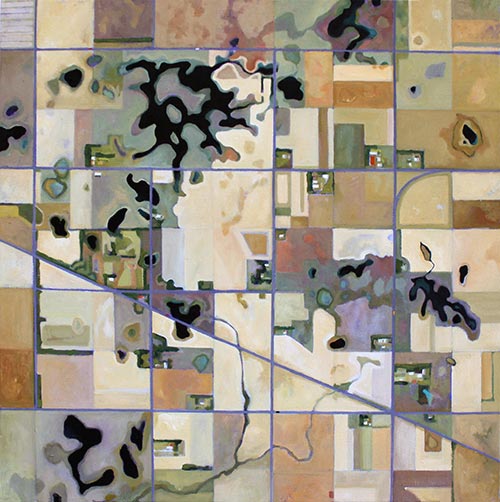 Backbeyond, oil on canvas
Backbeyond, oil on canvas
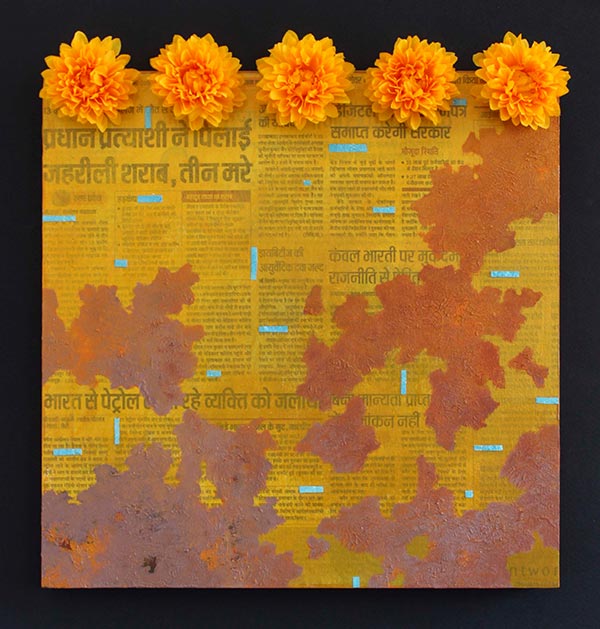 Old Delhi - 1PM, mixed media on canvas
Old Delhi - 1PM, mixed media on canvas
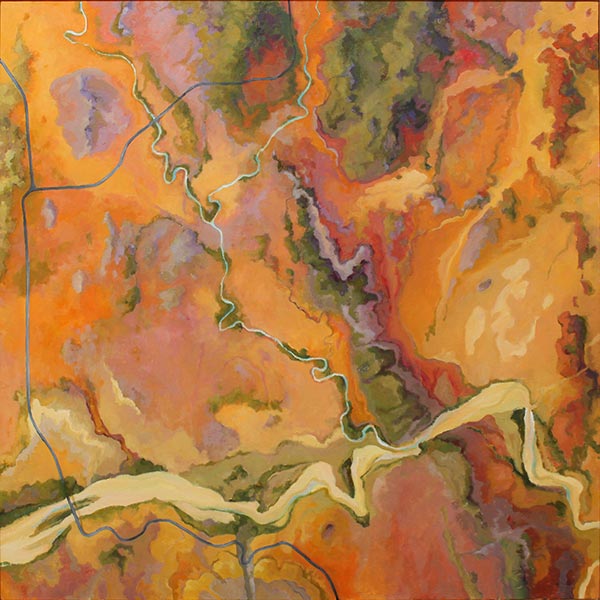 Desert Solitaire 18, oil on canvas
Desert Solitaire 18, oil on canvas
Prices available on request